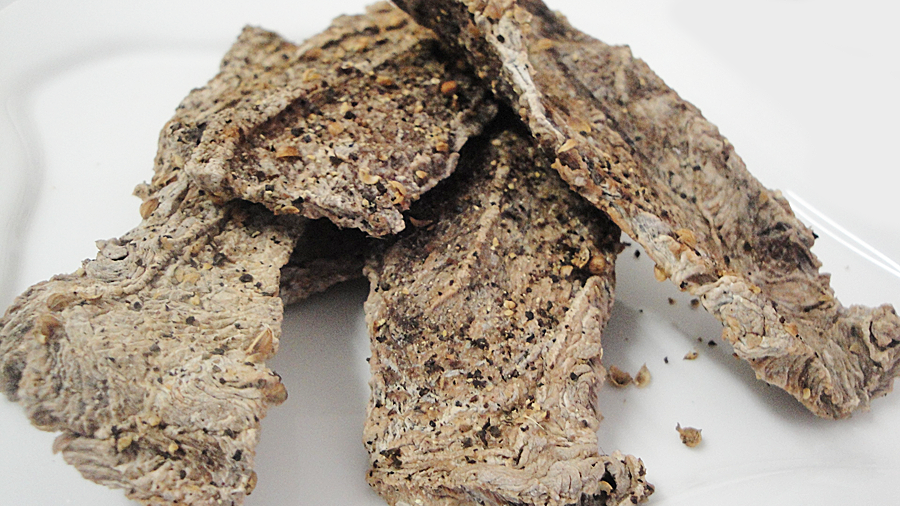- 500g game meat/ tender beef steak
- 200ml apple cider vinegar
- 200ml white wine vinegar
- 200g coarse salt
- 200g brown sugar
- handful of black peppercorns
- handful of whole coriander
- 1/2 tsp bicarbonate of soda
I love biltong!! It’s one of my all time favourite snacks, well after dried fruit, nuts and seeds of course 🙂 !! I decided to try and make some on my own using game meat. I was quite pleased with the results (for a first timer!!) I’m confident the more I do it, the more I’ll become a pro at it and even have different flavours to play around with.
The game meat I used here was Kudu, the steaky part of the meat. It was quite tender and had been cut at the butchery already so was a bit thin in terms of the width, which all worked in my favour as the drying process took just one day! Normally, with thicker pieces/slices, the process can take up to 4 days even. But as been said, patience is a virtue, so if you do make thick slices, you can still wait until they’re done 🙂
The perfect cut of meat to use when making biltong is steak. If using beef you can use silverside steak or any steak you can find.
Resources/Equipment You Will Need
- Chopping board
- Sharp knife
- Plastic marinating container
- Plastic tray
- 2 Wide dinner plates
- Measuring jug
- Tablespoon
- Cling wrap (check my online shop if you need some)
Quick Instructions
- Get your ingredients ready; 500g game meat/ tender beef steak; 200ml apple cider vinegar; 200ml white wine vinegar; 200g coarse salt; 200g brown sugar
handful of black peppercorns; handful of whole coriander and 1/2 tsp bicarbonate of soda. - Cut your meat into the sizes you prefer and lay them in your marinating container.
- Pour the white wine vinegar and the apple cider vinegar into a measuring jug and mix well with a spoon to combine the two.
- Pour the vinegar mixture over your meat in the marinating container. Seal the container tight and and leave the meat to “marinate” for 30 minutes. The vinegar will tenderise as well as sterilise the meat.
- In the meantime grind the black peppercorns and the whole coriander and combine them. Prepare your cure mixture which is combining your salt, sugar and bicarbonate of soda.
- Lay a thin layer of the cure mixture in your plastic tray.
- When your meat has been tenderised and sterilised, remove it from the vinegar mixture. Do not discard the vinegar, reserve it for later use. Roll each piece of meat in the spice mixture first, shake off any excess, roll it into the cure mixture, again shake off the excess. Lay the pieces into the plastic tray that already has the cure mixture. Reserve any excess spice mixture for use later.
- When all the meat is coated in the spices and cure mixture, Put a final coat of the cure mixture on the meat. If your meat pieces are thin like mine, cure for just 1 hour. If they are thicker, do not exceed 2 hours as your resulting biltong will be salty.
- After the curing time, shake/dust off most of the salt. Take the reserved vinegar mixture and rinse off all of the cure mixture. If your reserved mixture is too little to rinse, you may combine another batch of the vinegars and rinse off the salt.
- Take a baking sheet and line it with baking paper then place a cooling rack on top and set aside. Use a clean dish towel or paper towel to pat dry the meat pieces that you rinsed. Take the set aside cooling rack and lay the meat pieces on it. Sprinkle the remaining spices mixture on the meat pieces lightly (optional). Put cooling rack in the warmer drawer of your oven and switch it on. Leave the warmer drawer slightly open as you do not want it to be too hot for the meat. (If the temperature’s too hot the meat will cook and not dry up!! It should not be more than 40 degrees Celsius) Keep checking on it until it is done.
Pictorial Detailed Instructions
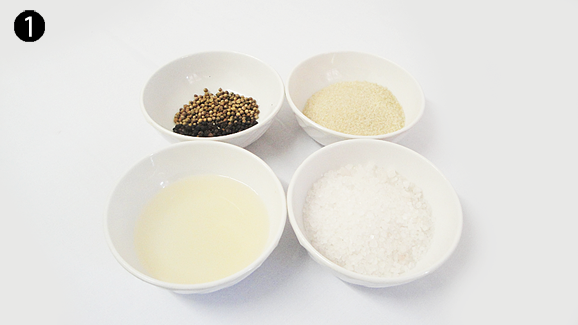
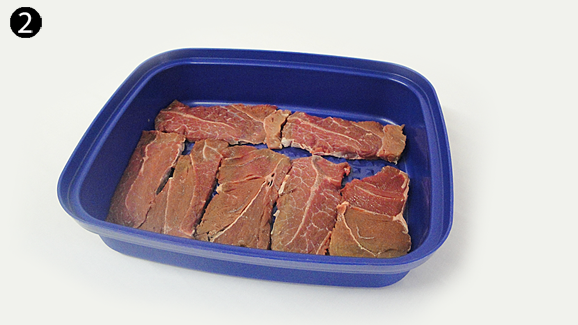
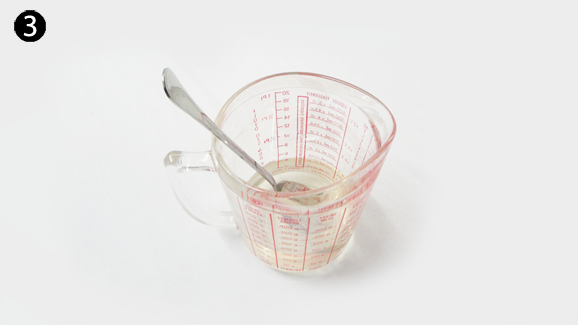
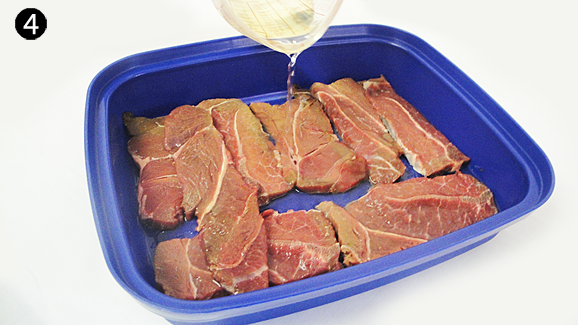
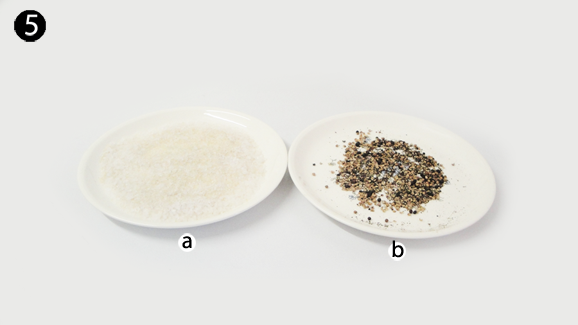
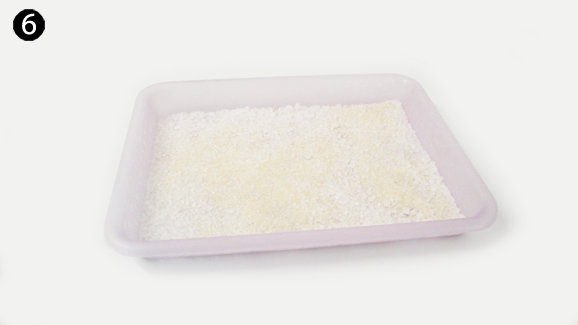
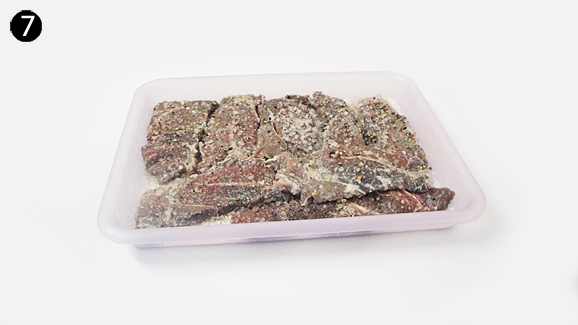
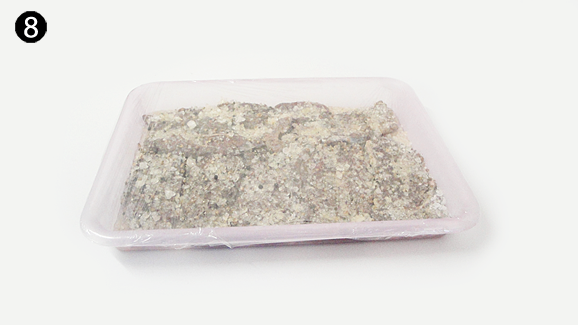
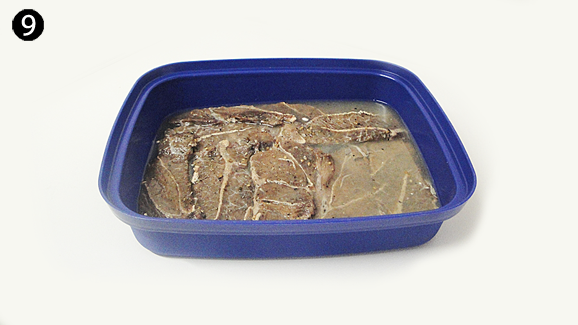
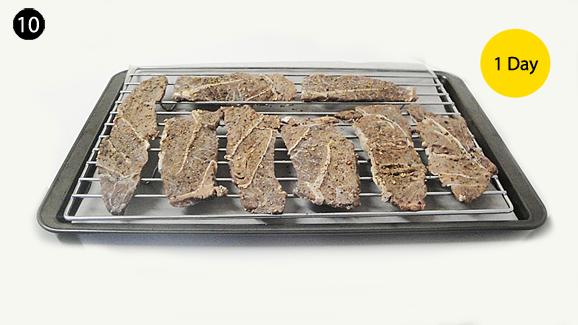
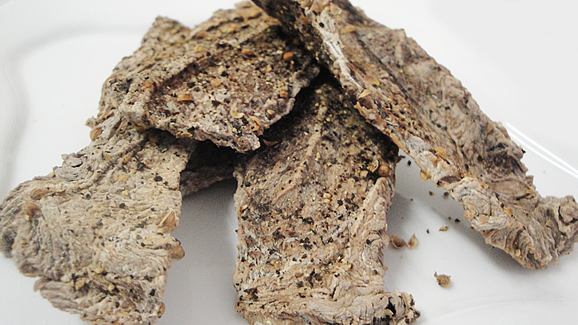
You may switch the warmer drawer on and off at intervals if you feel that it’s too hot even with the oven drawer opened slightly. Alternatively, you can use plastic coated paper clips and unwind them to have that “S” shape. Use them as hooks and securely hook the meat. Hang it outdoors where there’s bright sunshine and no humidity.
You can create your own line where you will hang the meat or even use the washing line! Cover the meat with anything suitable like a food cover but ensure that it does not touch the meat. This is because insects, including flies may land on it and lay eggs which could then end up on your meat and you know how the story goes! The biltong is done when it feels completely dry and hard. After this you can have your biltong for months in its state. All the best and let me know how it goes when you try this out. Sign-up here for more recipe alerts by email.

